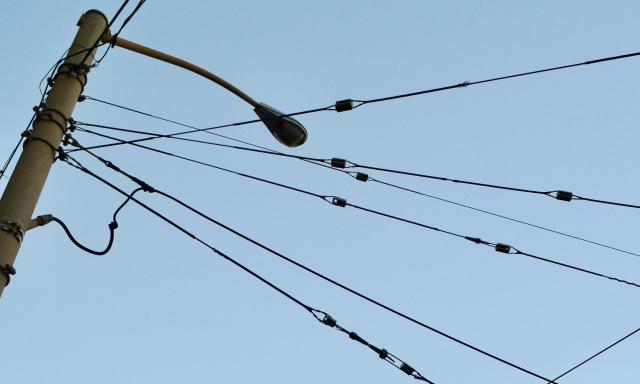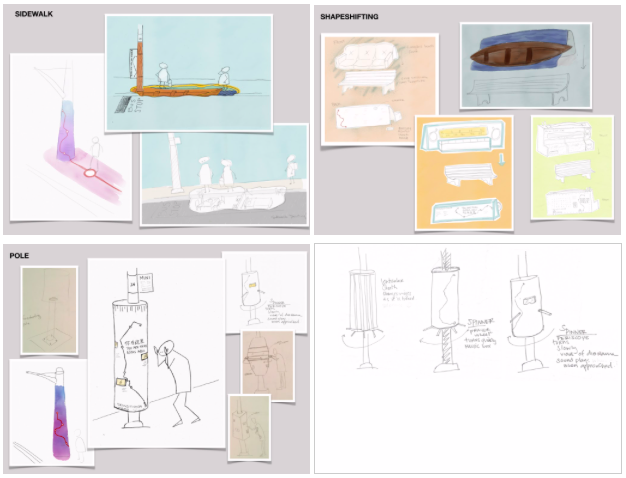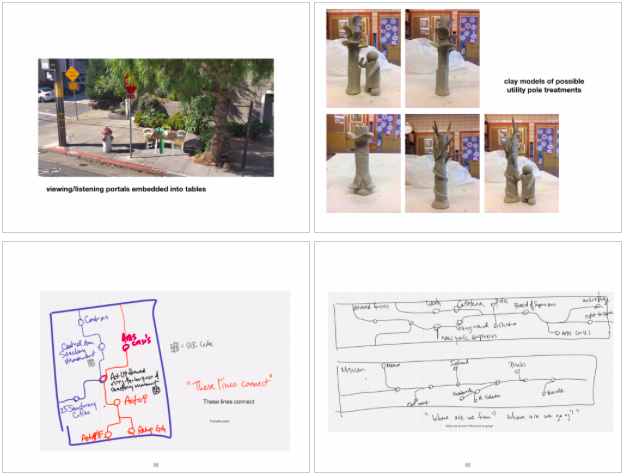Transition24
Mapping survival in San Francisco

TRANSITION24 is an ambitious, site-specific, story-sharing project highlighting the history of survival in neighborhoods along the 24 Divisadero bus line. The vision is to create temporary, interactive audio stations, alternative printed maps, and multi-sensory gatherings along this bus route and in the space of transit itself.
The 24 Divisadero is a highly trafficked artery in San Francisco, connecting a particularly wide range of communities from Bayview to Pacific Heights. The line passes through Western Addition, Castro, Mission, and Bernal Heights—all historic neighborhoods transformed by great political and socio-cultural shifts.
This project is a reminder of and encouragement toward connection and shared resilience. Having received some funding from the Kenneth Rainin Foundation's Open Spaces grant, we were able to start historical and archival research, local community engagement, preliminary site planning, concept sketching, prototyping, meeting with city agencies, and story-mapping and narrative storyboarding.
With additional grants in the future, we hope to realize our vision.


Concept sketches
TRANSITION24 would be a broad flood of public art: creating or tweaking street furniture, toying with bus advertising, and the concept of ‘transit/transition’ between neighborhoods and transit maps.
Each work is specific to a neighborhood, drawing from oral histories, documentary media, and archived ephemera to create multisensory immersions. With community members who live, work or commute along the 24 route, we plan to excavate networks that supported them during times of change and crisis. We are particularly interested in showing intersections of experience, highlighting nodes of common learning across different social and political movements (e.g. overlap in activism between the Central American sanctuary movement and ACT-UP during the 80s).
Pieces are deliberately tactile, durable, and low-tech.
City
"At every instant, there is more than the eye can see, more than the ear can hear, a setting or a view waiting to be explored. Nothing is experienced by itself, but always in relations to its surroundings, the sequences of events leading up to it, the memory of past experiences.
Looking at cities can give a special pleasure, however commonplace the sight may be. Like a piece of architecture, the city is a construction in space, but one of vast scale, a thing perceived only in the course of long spans of time. City design is therefore a temporal art, but it can rarely use the controlled and limited sequences of other temporal arts like music. On different occasions and for different people, the sequences are reversed, interrupted, abandoned, cut across. It is seen in all lights and all weathers."
Kevin Lynch, The Image of the City ( 1960)
For more information, please contact us at hello @ survivalproject.net
Recipients of a 2018 Kenneth Rainin Foundation Open Spaces grant.
